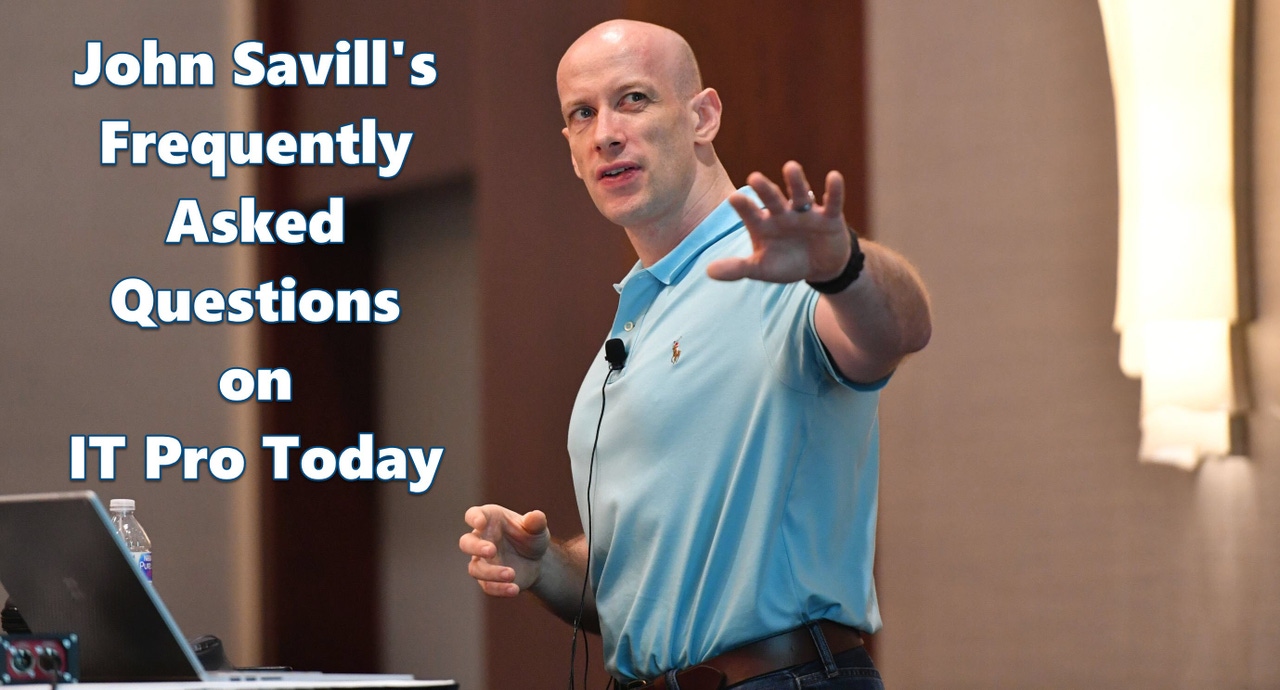Savill's FAQs: Managing and Using VMs in AzureSavill's FAQs: Managing and Using VMs in Azure
Three times a week, John Savill tackles your most pressing IT questions. Today: Learn about some aspects of managing and using VMs in Azure.
January 9, 2018

Three times a week (Monday/Wednesday/Friday), John Savill tackles your most pressing IT questions.
Read through the FAQ archives, or send him your questions via email.
Today: Learn about some aspects of managing and using virtual machines (VMs) in Azure.
Q. How many times a day can I back up virtual machines (VMs) in Azure with Azure Backup?
A. When creating an Azure backup policy, the smallest interval you can set is daily, i.e. one backup a day will be taken. Additionally you can perform up to three on-demand backups. However, they are not recommended to be used as part of standard operation. So the ultimate answer is four backups, with the caveat that at least three are not recommended for standard operation use. How you'll be using VMs is up to you after the backups.
Q. Can I control when Turbo Boost is used for my VMs in Azure?
A. There is no manual way to control the use of Turbo Boost and its operation is completely automated via the Hyper-V host.
For those wondering what Turbo Boost is: This is a feature of an Intel processors. As Intel explains it: "Intel® Turbo Boost Technology 2.0 allows the processor to operate at a power level that is higher than its TDP configuration and data sheet specified power for short durations to maximize performance." The processor will slip into Turbo Boost mode when conditions allow, and these conditions include: Type of workload, number of active cores, estimated current consumption, estimated power consumption and processor temperature.
You can check which VM sizes support the Turbo Boost feature review.
Q. Should I use disk defragmentation for my Azure IaaS VMs?
A. No. Disk defragmentation is useful on magnetic media where a single disk is used and pieces of a file are moved to be contiguous, thereby reducing seek times. In Azure, even if using regular HDD-based storage, the actual VHD file is spread over a huge number of disks with numerous caching technologies. This makes disk defragmentation unnecessary for VMs in Azure. You should never use disk defragmentation on SSD-based storage since there is no seek time for storage, and constantly moving blocks can reduce the life span of a disk.
About the Author
You May Also Like
.png?width=100&auto=webp&quality=80&disable=upscale)
.png?width=400&auto=webp&quality=80&disable=upscale)






.jpg?width=700&auto=webp&quality=80&disable=upscale)
